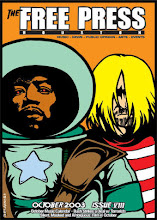Cheri

There's a type of filmmaking where you take the viewer through a tumultuous landscape of life and love yet only reveal the full scope, the end result if you will, of the protagonist's life in the film's closing seconds. Truffaut did this in many of his films, Wes Anderson did it at the end of The Royal Tenenbaums. Cheri, the latest film from Stephen Frears, accomplishes this subtle hat trick.
Someone mentioned The Queen (Frears' previous and widely lauded film) when I was discussing Cheri after having first seen it. I've always liked Frears and his sense of the working class in films like Liam or Dirty Pretty Things or High Fidelity, just to concentrate on films he's made in the last ten years. I liked The Queen but rate it low on the scale of Frears flicks.
Cheri, adapted from two novels by Colette, slyly observes the closing act of a fin de cycle Parisian whore. Set at the close of the 19th century and segueing into the early years of the 20th century allows Frears to comment on the end of a way of genteel life as the advent of the first World War evens out the classes. The script reunites Frears with his Dangerous Liaisons scribe Christopher Hampton and star Michelle Pfeiffer who plays Lea de Lonval.
Pfeiffer puts all of her talent on display for this character. After all it's not like she's highly visible nowadays. Her last starring role went straight to DVD (I Could Never Be Your Woman with Paul Rudd). de Lonval demands a mature, 50-ish woman in a role that doesn't require her to be stalked or involved in a nonsensical romance. There's romance to be sure but it's bittersweet.
Pfeiffer against her better judgement becomes involved with Cheri (Rupert Friend) the son of a fellow courtesan (Kathy Bates). The film charts their affair over a period of years and the effect it has on all involved. Cheri is witty, wise and as previously mentioned bittersweet because despite all the trappings of high society the love affair we observe has a poignant and real arc. There's a lot of passion on display and when that's gone it leaves an empty place in Lonval's heart that will resonate with the audience.











